South Park Archaeology Project
 Examples of Project Discoveries
Examples of Project Discoveries
During the 2001 and 2002 field seasons we were able to intensively survey 4,000 acres in five areas: Mud Springs/Threemile Gulch, Red Hill Pass, Reinecker Ridge near the Playa Lakes, directly below Kenosha Pass on the Columbine and Steiner ranches, and the Santa Maria Ranch near Hartsel. Project personnel recorded over 120 sites and 225 isolated finds. Site types include lithic scatters, open hunting and plant-gathering camps, rock shelters, lithic procurement (quarries), and culturally peeled (Ute) sites. While most of the sites are lithic scatters, we have found two rock shelters, one a possible Paleoindian occupation; two sites have circular rock-ring structures, and four sites have rock cairns, rock piles, or hearths. Examples are shown below.
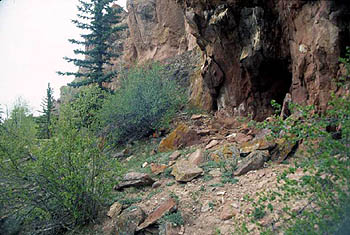
Rock Shelter
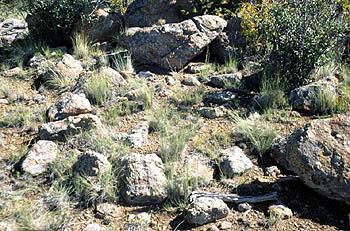
Rock Ring
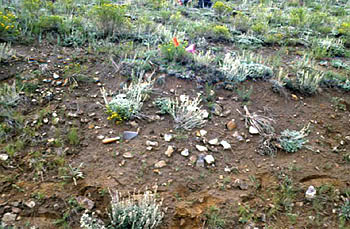
Fire Hearth
The sites are primarily surface expressions, but along with the two rock shelters, five others may have significant depth, as much as 5+ feet (1.9 meters) at a site in the Threemile Gulch area. One of the more interesting sites is a cache of Trout Creek chert and petrified wood nodules.
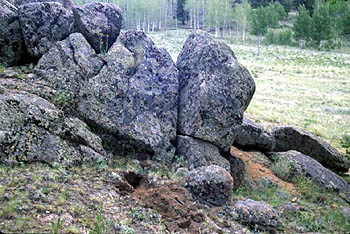
Cache
The procurement strategy appears to be generally expedient, although significant quantities of Trout Creek chert and Kremmling chert are present.
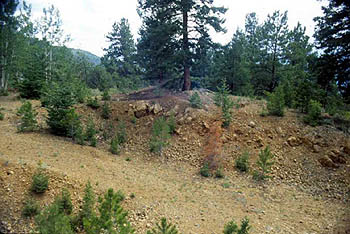
Trout Creek Quarry
Other commonly used material includes Morrison quartzite and other unnamed quartzite varieties which are locally available in gravel deposits and petrified wood of which numerous sources are present in the Mud Springs-Threemile Gulch area north of Hartsel.
Also present is Table Mountain jasper from Middle Park, Hartville chert from Wyoming, and obsidian. In addition, there seems to be a local rhyolite industry which we are beginning to document and understand more clearly.
Rhyolite Cores
Based on established projectile point typologies, SPArP sites fall within all established prehistoric chronological periods. Preliminary analysis indicates the following periods are represented:
- Paleoindian
- Early Archaic
- Middle Archaic
- Late Archaic
- Late Prehistoric
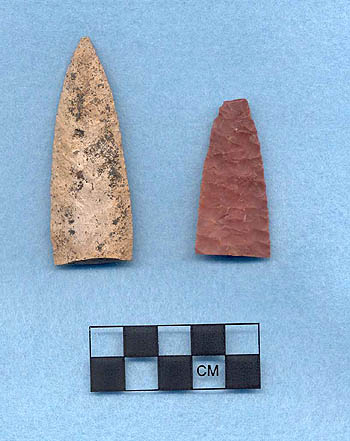
Paleoindian Projectile Points
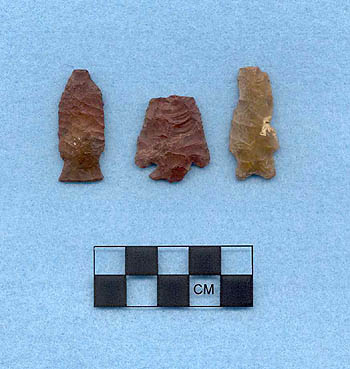
Archaic Projectile Points
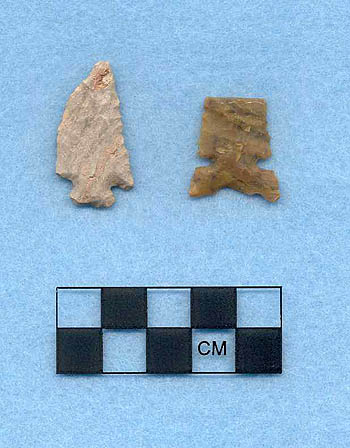
Late Prehistoric Projectile Points
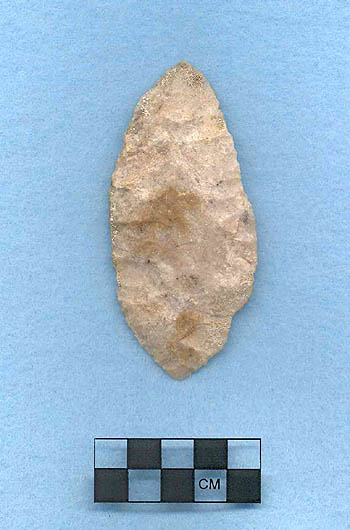
Knife
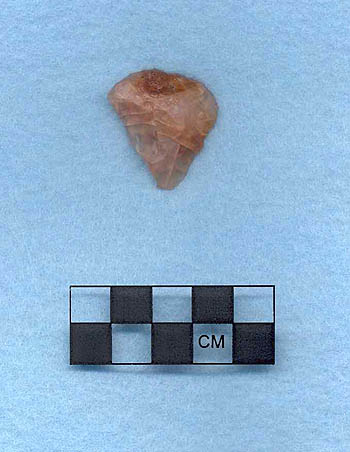
End Scraper
This evidence clearly is incomplete; we expect the presence of Middle Archaic is much greater that our data currently shows. To date we have not identified evidence of Clovis, pre-Clovis, or protohistoric occupations. There is one site documented by SPArP in the summer of 2002 that appears to have Folsom-related artifacts.